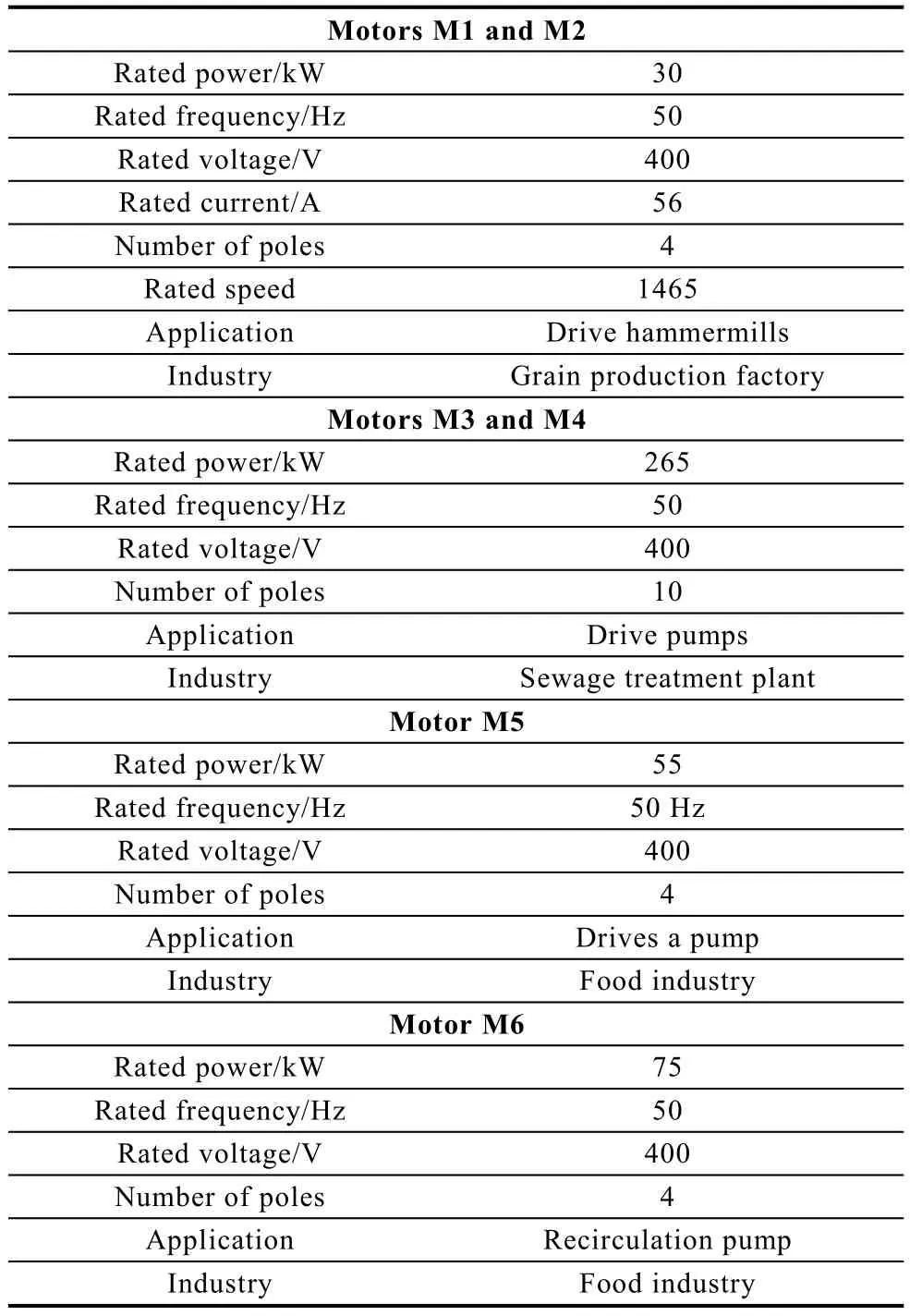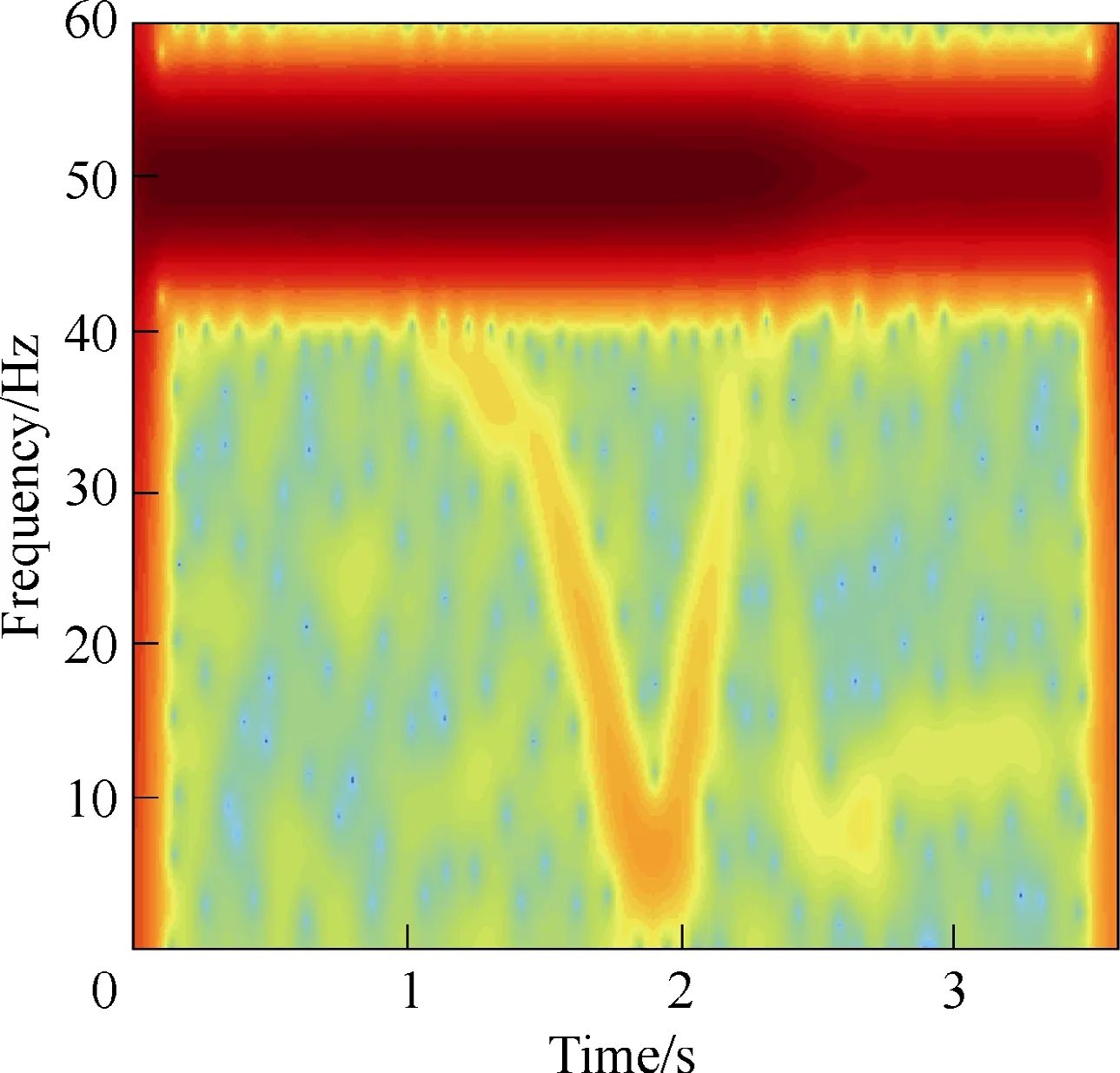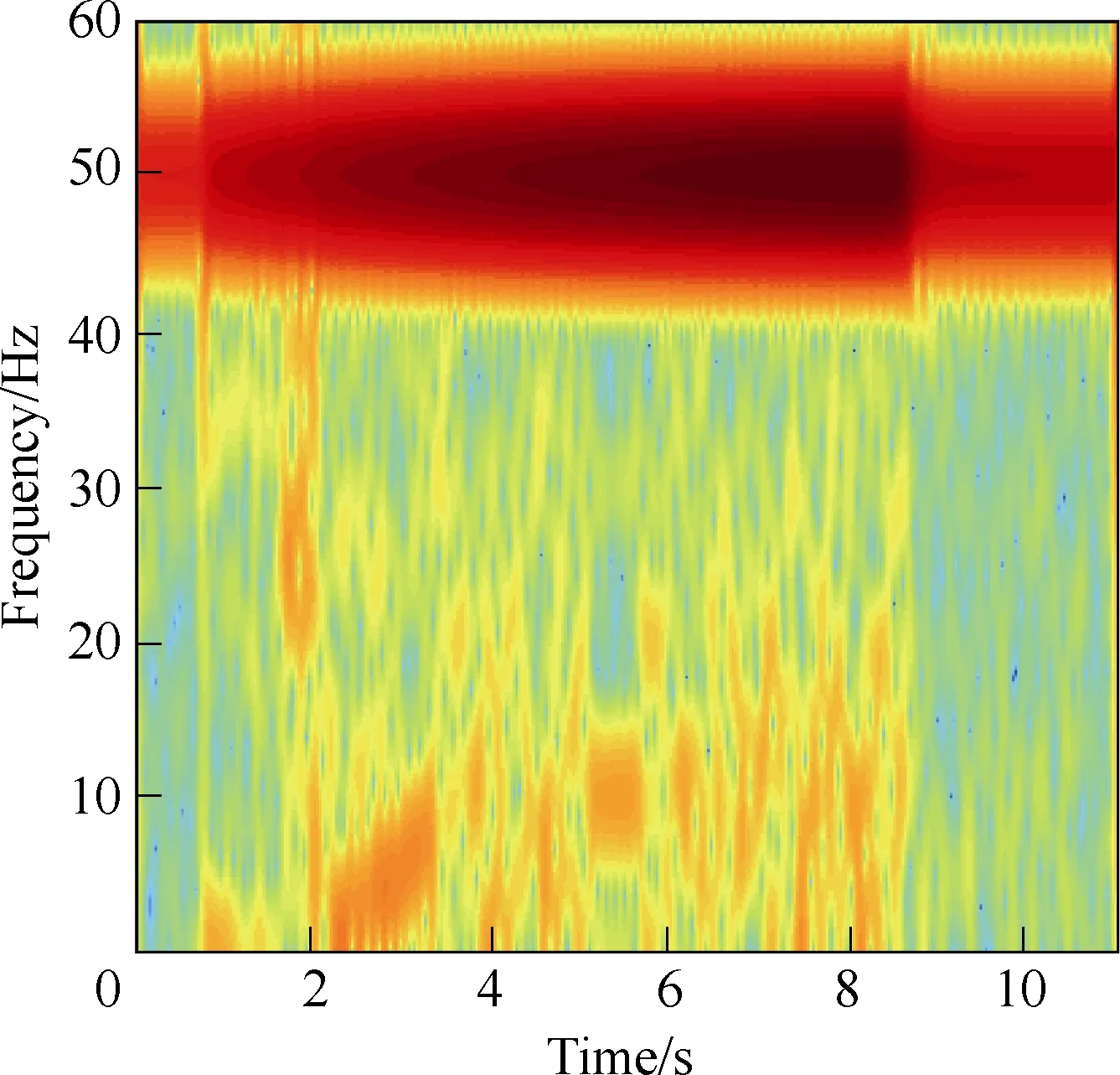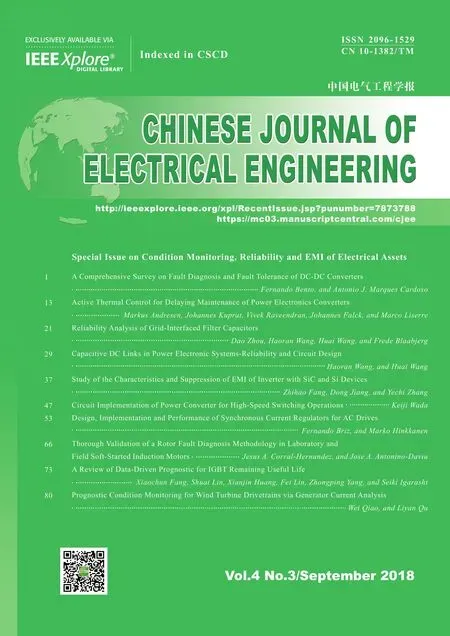Thorough Validation of a Rotor Fault Diagnosis Methodology in Laboratory and Field Soft-Started Induction Motors
(Instituto Tecnológico de la Energía, Universitat Politecnica de Valencia, Valencia 46022, Spain)
Abstract: Induction motors are the most widespread rotating electrical machines in industry.Predictive maintenance of the motors is of crucial importance due to the fact that unexpected faults in those machines can lead to huge economic losses for the corresponding companies. Over recent years,there is an increasing use of industrial induction motors operated by different types of drives, which have different functionalities. Among them, the use of soft-starters has proliferated due to the inherent benefits provided by these drives: they damp the high starting currents, enabling the soft startup of the motors and avoiding undesirable commutation transients introduced by other starting modalities. In spite of these advantages, they do not avoid the possible occurrence of rotor damages, one of the most common faults in this type of motors. Few works have proposed predictive maintenance techniques that are aimed to diagnose the rotor condition in soft-started machines and even fewer have demonstrated the validity of their methods in real motors. This work presents, for the first time, the massive validation of a rotor fault diagnosis methodology in soft-started induction motors. Industrial and laboratory and induction motors started under different types of soft-starters and with diverse rotor fault conditions are considered in the work. The results prove the potential of the approach for the reliable assessment of the rotor condition in such machines.
Keywords: Induction motors, soft-starter, fault diagnosis, transient analysis, rotor, reliability, fault detection, wavelet.
1 Introduction
Induction motors are used in multiple industrial applications of diverse sectors[1]. In a single factory,there can be hundreds or even thousands of these machines. Despite the fact that they are quite reliable machines in comparison with other counterparts (such as DC machines or synchronous motors), they can suffer several types of faults[2]. Several studies have shown that bearing failures, stator insulation faults and rotor damages are the most common faults in these machines[1,3-4].
Rotor faults are especially dangerous due to several reasons[1,5]: 1) often, the maintenance of this part of the machine is limited or non-existent;2) in the most common situations, the occurrence and development of the fault does not show external symptoms of its presence and 3) it typically occurs in large motors, with fabricated copper bars in their rotor cage which are often are the most expensive and critical machines[2].
Over recent years, there has been a proliferation of the use of starting systems that are aimed to damp the high currents demanded by induction motors under starting. One of the objectives of these systems is to allow softer startups so that the different parts of the motors(e.g. the rotor) are subjected to lower stresses and thermal gradient.
Nowadays, different starting methods are used in industry, such as start-delta starting, starting via auto-transformer, starting via stator resistors.[6]One of the preferred starting modalities is based on the use of soft-starters. Basically, these drives feed the motor with an increasing voltage during the starting, so that the current increases in a soft and progressive way.Some of them even enable the limiting of current under starting.
Soft-starters are based on a power block and a control block. In the most common configuration, the power block is based on thyristors which are connected in antiparallel. By varying the conduction angle of the thyristors(by means of the control circuit),the soft-starter regulates the RMS value of the voltage applied to the motor. Soft-starters bring significant advantages in comparison with other starting methods,such as the avoidance of commutation transients, greater flexibility (the user can set parameters such as the initial voltage, the duration of the voltage ramp or the maximum starting current) and removal of moving contacts or parts, among others[6].
The use of soft-starters does not prevent the occurrence of rotor damages. It has been shown that the use of these drives has some collateral effects,such as the amplification of certain harmonics in the current demanded by the motor[7-8]. The amplification of these harmonics can cause torque harmonics which can produce additional solicitations in the rotor and even excite some cage resonant vibration modes[9-10].Moreover, as pointed out in [9], interactions among magnetic fields, generated by voltage harmonics, and stator and rotor current distributions may lead to secondary torque harmonics that can cause resonance problems, resulting in additional fatigue stresses[11].Finally, it must be said that, although the use of soft-starters enables damping of the high inrush currents, the starting current can still reach high values (equal to several times the rated current) which are present during several seconds; this can also contribute to the rotor cage deterioration.
Few works have dealt with rotor condition assessment in soft-started motors[7-8]. These few existing papers propose methods that, in most cases, have not been thoroughly validated in a diversity of motors and soft-starter topologies. The objective of this work is to thoroughly validate a fault diagnosis methodology based on the analysis of the starting current by means of advanced time-frequency transforms. This methodology brings significant advantages versus other classical methods, as pointed out in previous works[12-15]. For the first time, the method is validated using more than 900 signals coming from both laboratory and field motors, with rather different characteristics and that are started using different soft-starter brands and topologies. The results prove the reliability of the proposed method and its suitability for its future incorporation in on-line condition monitoring devices or even in the own soft-starter, increasing the functionalities of this drive.
2 Rotor condition assessment in soft-started motors
In the last decade, a novel methodology based on the analysis of transient currents has emerged as a reliable and robust technique to diagnose the rotor condition of induction motors[12-15]. Its most widespread version relies on the analysis of the demanded current of the motor under starting, using advanced signal processing tools. Unlike the classical Motor Current Signature Analysis(MCSA) approach which relies on the evaluation of the amplitudes of frequency harmonics in the Fourier spectrum of the steady-state current, this new methodology is based on detecting‘patterns’ or ‘signatures’ that are caused by the time-frequency evolutions of the fault harmonics under the starting[12-15]. These evolutions have been proven to be very reliable indicators of the presence of the fault and can be used to determine its severity.
As an example, it has been extensively reported that the lower sideband harmonic(LSH) amplified by a rotor damage, with frequency given byfLSH=f·(1-2s)(withf=supply frequency ands=slip), follows a characteristic evolution under a direct-on-line starting,as the slipschanges between 1 and near 0. More specifically, the frequency of this harmonic is equal tofwhen the machine is connected(s=1). Then,it decreases progressively to 0Hz(s=1/2) and it increases again until reaching its steady-state value(s≈0). The result is that the LSH harmonic follows a very characteristic V-shaped trajectory(or ‘pattern’) in the time-frequency map[12-15]. The detection of this trajectory can be only done by applying special signal processing tools that are able to obtain the timefrequency content of the starting current; these tools are known as time-frequency transforms[16].
The new trend based on the identification of the V-shaped trajectory followed by the LSH has proven to provide important advantages in comparison with the classical MCSA method, such as the avoidance of false indications(positive/negative)[12-15]or the validity of the approach under variable speed regimes[17].However, its application has been mainly circumscribed to assess the rotor condition in motors started directon-line(DOL). Few works have studied its application in soft-started motors[7-8]. In spite of this, the same idea can be extrapolated to these motors: the LSH, if present, follows a V-shaped trajectory that can be used for the reliable detection of the fault. However, due to the varying nature of the RMS voltage that the soft-starter applies to the motor, the width of the pattern may change slightly in comparison with that obtained for a direct startup. Fig.1 shows the comparison between the pattern caused by the LSH evolution for a DOL-started motor and for a soft-started machine with two broken bars in the rotor cage.

Fig.1 Time-frequency analysis for an induction motor with two broken bars
Moreover, it has been proven that the use of soft-starter amplifies some harmonics that are always present, even in healthy conditions[7-8]. The most significant are the Principal Slot Harmonics(PSHs)which also follow particular trajectories under starting.The evolutions of these harmonics contribute to slight‘blurring’ of the time-frequency map in the low frequency region where the LSH evolves. This is perfectly noticeable in Fig.1(b) which shows how the V-shaped trajectory caused by the evolution of the LSH coexists with the evolutions of other harmonics(PSH) which are not observable in a direct startup (Fig.1(a)).
3 Thorough validation of the method
This section presents the massive validation of the transient-based methodology both in laboratory and in field soft-started motors. More than 900 signals where employed to validate the methodology.
3.1 Laboratory tests
Laboratory tests were carried out using a special test bench based on a 1,1kW motor coupled to a DC machine acting as load. Rotors with different levels of failure(0, 1 and 2 broken bars) where employed for the tests. The bar fault was forced by drilling a hole between the bar and the end ring.
The motor could be soft-started by using four different models of soft-starter corresponding to wellknown manufacturers. In each test, the motor as started and the current of each phase was captured with a waveform recorder, both under starting and at steady-state.The sampling rate used to capture the signals was 5kHz.For each soft-starter, different tests were developed for several levels of rotor failure. In each test specific startup parameters(initial voltage, duration of the voltage ramp) were set up. Fig.2 shows pictures of the test bench and of the tested soft-starters.
The four soft-starters used in the laboratory tests had different brands as well as different characteristics and topologies. One of them was controlled in the three phases, two had control in two phases and the other one had control in only one phase. The main characteristics of these soft-starters are specified in Table 1.

Fig.2 Pictures of the experimental test bench and tested soft-starters

Table 1 Characteristics of the soft-starters used for the laboratory tests
Figs.3 and 4 show some representative results of the application of the method to the laboratory motors.These figures represent the time-frequency analyses(with the Short Time Fourier Transform, STFT) of the starting current of the tested motor when it is started using the four considered soft-starter models(see Table 1). Two conditions of the motor are considered:healthy machine(Fig.3) and motor with one broken bar in the rotor cage(Fig.4).
Fig.3 shows that, for a healthy soft-started motor,the region below the supply frequency(50Hz) is not completely clean but it is ‘polluted’ by several components. Indeed, some soft-starter models(e.g.Model A and, especially, Model C) show a higher harmonic content in that region, in comparison with others. These graphs prove two facts: 1) the use of soft-starter contributes to the amplification of some harmonics under starting, even under healthy conditions and 2) the harmonic content is not similar for all soft-starters. More specifically, multiple tests carried out reveal that soft-starters with less than three controlled phases are more prone to increment the harmonic content in that region.
In any case, another conclusion of the observation of Fig.3 is that the V-shaped ‘pattern’ or ‘signature’caused by the ‘trip’ of the LSH during the transient is not present. This is due to the fact that the machine is healthy. Therefore, the diagnosis methodology behaves well in the sense that it is able to confirm the absence of the fault.
On the other hand, Fig.4 proves that, even if the level of rotor damage is low(only one broken bar out of 28), the ‘V-shaped’ pattern caused by the evolution of the LSH is noticeable and can be used to reliably confirm the presence of the fault. Other tests carried out with greater fault severities(two broken bars) reveal even clearer patterns. This is especially interesting considering the harmonic content amplified under soft-starter operation that complicates the identification of the pattern, in comparison with a direct startup.
3.2 Field tests
The methodology was applied to six different soft-started motors operating in different industries(food industry, grain factory and sewage treatment plant).These motors were started with different soft-starters and had different characteristics and operating conditions.Table 2 shows the main characteristics of these machines.Fig.5 shows pictures of some of the tested motors.

Fig.3 Time-frequency analyses of the starting current for the healthy motor started using different models

Fig.4 Time-frequency analyses of the starting current for the motor with one broken rotor bar started using different models

Table 2 Tested field motors

Fig.5 Pictures of some of the tested field motors(M1, M2, M5,M6)
Figs.6~11 show the time-frequency analyses(using the STFT) of the starting currents for the six considered field motors. The analysis show that the V-shaped pattern caused by the evolution of the LSH is absent in all cases except on motor M4. In that motor, the pattern is clearly present and has a prominent intensity. As a consequence, the rotor of that motor was diagnosed as faulty, while all the other machines were considered to have healthy rotors.Note that, in all cases, the harmonic content in the low frequency region is noticeable, a fact that confirms the previous statements related to the harmonics amplification under soft-starter operation.

Fig.6 Time-frequency analysis of the starting current for the M1 field motor

Fig.7 Time-frequency analysis of the starting current for the M2 field motor

Fig.8 Time-frequency analysis of the starting current for the M3 field motor

Fig.9 Time-frequency analysis of the starting current for the M4 field motor

Fig.10 Time-frequency analysis of the starting current for the M5 motor

Fig.11 Time-frequency analysis of the starting current for the M6 motor
These analyses prove, first, that rotor bar faults are likely to happen in soft-started machines(as it occurred in motor M4) and, second, that the proposed methodology is able to diagnose the rotor condition under soft-starter operation in spite of the harmonic content introduced by these drives.
4 Conclusion
This paper presents, for the first time, the thorough validation of a rotor condition assessment methodology for soft-started motors. In the work, this methodology is validated both in laboratory motors and in field machines. More than 900 starting current signals are used for this validation; they correspond to motors started under different soft-starter topologies and with diverse fault conditions.
The results of the work show that the methodology works perfectly for detecting the rotor fault through the identification of characteristic patterns caused by the fault components in the resulting time-frequency maps. It also proves that the use of soft-starters contributes to the amplification of harmonics in the low-frequency region, where the fault components evolve which may make the identification of the fault harmonics evolutions more difficult. Moreover, it is shown that the method works for different industrial motors of diverse sectors, which confirms its industrial applicability.
The potential of this tool is huge, since it may be incorporated in autonomous diagnosis devices for the determination of the motor heath. It also shows potential for its future incorporation in the soft-starter itself, increasing its functionality and incorporating diagnostic features.
 Chinese Journal of Electrical Engineering2018年3期
Chinese Journal of Electrical Engineering2018年3期
- Chinese Journal of Electrical Engineering的其它文章
- Prognostic Condition Monitoring for Wind Turbine Drivetrains via Generator Current Analysis
- A Review of Data-Driven Prognostic for IGBT Remaining Useful Life
- Design, Implementation and Performance of Synchronous Current Regulators for AC Drives
- Circuit Implementation of Power Converter for High-Speed Switching Operations
- Study of the Characteristics and Suppression of EMI of Inverter with SiC and Si Devices
- Capacitive DC Links in Power Electronic Systems-Reliability and Circuit Design
